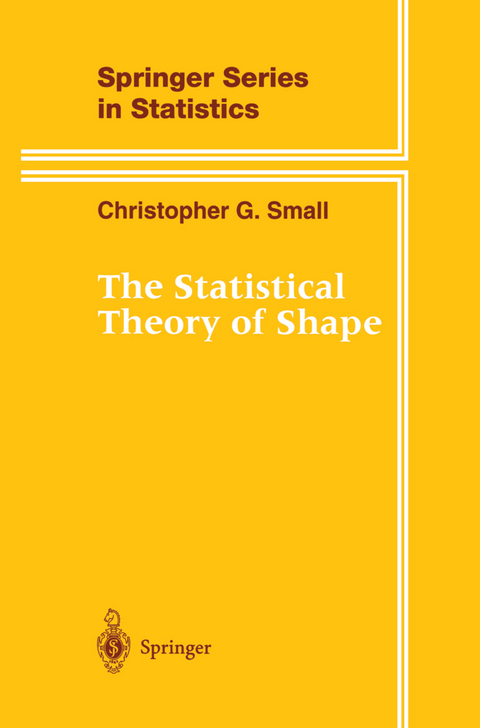
The Statistical Theory of Shape
Springer-Verlag New York Inc.
978-0-387-94729-7 (ISBN)
1 Introduction.- 1.1 Background of Shape Theory.- 1.2 Principles of Allometry.- 1.3 Defining and Comparing Shapes.- 1.4 A Few More Examples.- 1.5 The Problem of Homology.- 1.6 Notes.- 1.7 Problems.- 2 Background Concepts and Definitions.- 2.1 Transformations on Euclidean Space.- 2.2 Differential Geometry.- 2.3 Notes.- 2.4 Problems.- 3 Shape Spaces.- 3.1 The Sphere of Triangle Shapes.- 3.2 Complex Projective Spaces of Shapes.- 3.3 Landmarks in Three and Higher Dimensions.- 3.4 Principal Coordinate Analysis.- 3.5 An Application of Principal Coordinate Analysis.- 3.6 Hyperbolic Geometries for Shapes.- 3.7 Local Analysis of Shape Variation.- 3.8 Notes.- 3.9 Problems.- 4 Some Stochastic Geometry.- 4.1 Probability Theory on Manifolds.- 4.2 The Geometric Measure.- 4.3 Transformations of Statistics.- 4.4 Invariance and Isometries.- 4.5 Normal Statistics on Manifolds.- 4.6 Binomial and Poisson Processes.- 4.7 Poisson Processes in Euclidean Spaces.- 4.8 Notes.- 4.9 Problems.- 5 Distributions of Random Shapes.- 5.1 Landmarks from the Spherical Normal: IID Case.- 5.2 Shape Densities under Affine Transformations.- 5.3 Tools for the Ley Hunter.- 5.4 Independent Uniformly Distributed Landmarks.- 5.5 Landmarks from the Spherical Normal: Non-IID Case.- 5.6 The Poisson-Delaunay Shape Distribution.- 5.7 Notes.- 5.8 Problems.- 6 Some Examples of Shape Analysis.- 6.1 Introduction.- 6.2 Mt. Tom Dinosaur Trackways.- 6.3 Shape Analysis of Post Mold Data.- 6.4 Case Studies: Aldermaston Wharf and South Lodge Camp.- 6.5 Automated Homology.- 6.6 Notes.
| Reihe/Serie | Springer Series in Statistics |
|---|---|
| Zusatzinfo | X, 230 p. |
| Verlagsort | New York, NY |
| Sprache | englisch |
| Maße | 156 x 234 mm |
| Themenwelt | Mathematik / Informatik ► Informatik ► Software Entwicklung |
| Informatik ► Theorie / Studium ► Künstliche Intelligenz / Robotik | |
| Mathematik / Informatik ► Mathematik ► Angewandte Mathematik | |
| Mathematik / Informatik ► Mathematik ► Geometrie / Topologie | |
| Mathematik / Informatik ► Mathematik ► Statistik | |
| Mathematik / Informatik ► Mathematik ► Wahrscheinlichkeit / Kombinatorik | |
| ISBN-10 | 0-387-94729-9 / 0387947299 |
| ISBN-13 | 978-0-387-94729-7 / 9780387947297 |
| Zustand | Neuware |
| Informationen gemäß Produktsicherheitsverordnung (GPSR) | |
| Haben Sie eine Frage zum Produkt? |
aus dem Bereich


